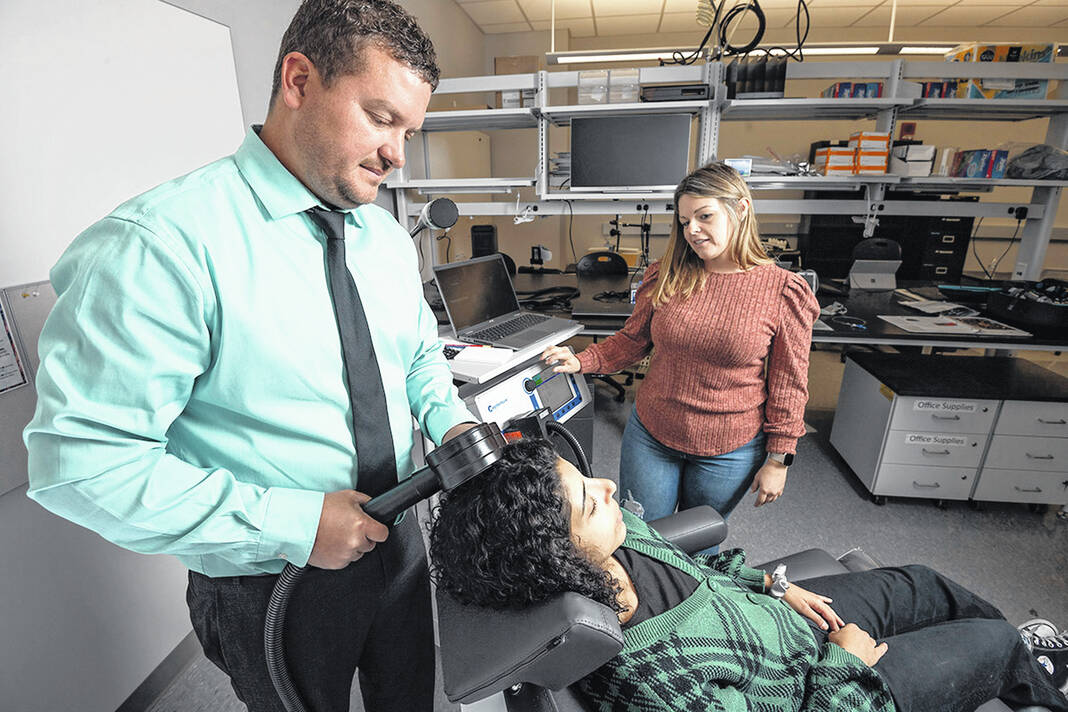
Courtesy photo | Wright State University
Matt Sherwood, a research associate professor in the Department of Neuroscience, Cell Biology, and Physiology, will led a clinical trial on the use of electroencephalogram transcranial magnetic stimulation to treat post-traumatic stress disorder.
FAIRBORN — Wright State University received approximately $160,000 in funding to conduct a stage 1 clinical trial on the safety of electroencephalogram transcranial magnetic stimulation (eTMS) to treat the effects of post-traumatic stress disorder (PTSD) in military veterans and first responders.
Leading the trial will be Matt Sherwood, Ph.D., a research associate professor in the Department of Neuroscience, Cell Biology and Physiology at Wright State. Partnering with sponsor Wave Neuroscience, Sherwood and a team of four Wright State graduate students will gather data on the effects of eTMS on a group of 30 people who have PTSD.
Wave Neuroscience applied for funding from the Ohio Department of Mental Health and Addiction Services to conduct the Food and Drug Administration clinical trial. The company is also responsible for developing the software that interprets EEG recordings, which determine the stimulation parameters that are used for the personalized protocol.
Sherwood said the primary goal of the trial is to gather data on potential side effects of the treatment, side effect mitigation and potential treatment efficacy.
Some of the benefits of eTMS as a treatment for PTSD are that it is a non-invasive treatment and highly localized. Sherwood said this gives eTMS an advantage over taking medication, which is distributed throughout the entire body.
Sherwood said PTSD occurs when exposure to a traumatic event causes the brain to develop abnormal neural pathways, which lead to heightened emotional responses and social anxiety. These responses can be triggered by stimuli that remind a person of the traumatic event.
Electroencephalogram transcranial magnetic stimulation stimulates the brain with the goal of changing abnormal neural pathways that are attributed to PTSD back to a path that elicits an efficient state.
When beginning treatment, the patient receives a baseline brain activity recording to establish individualized stimulation parameters. The treatment involves a small black coil positioned over the patient’s head and emits a magnetic field in a cyclical-based paradigm that non-invasively stimulates that brain for 20 minutes each session. The treatment is repeated 20 times over five weeks.

